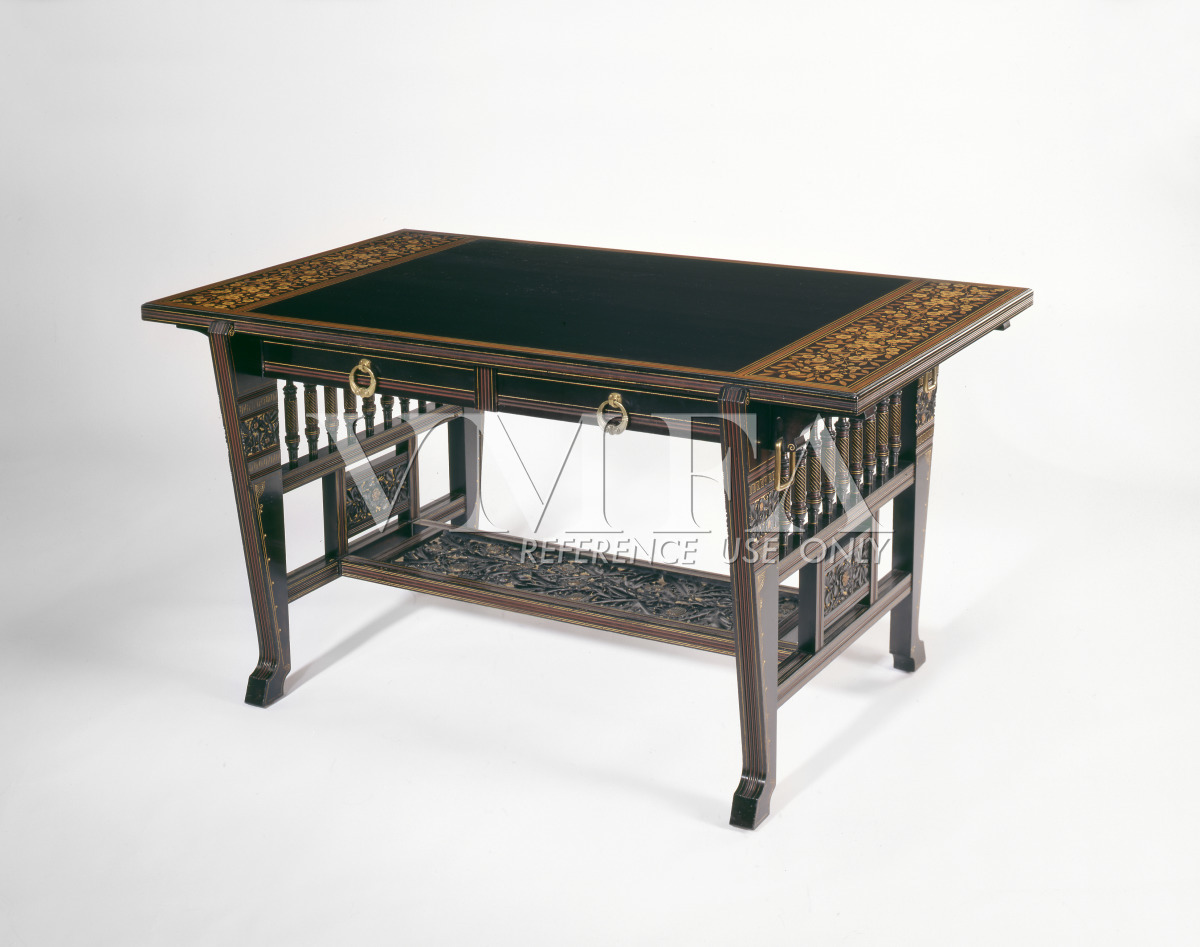
A striking example of 19th-century Aestheticism, this table represents Herter Brothers’ creative blending of neo-Egyptian form with Gothic- and Asian-inspired ornament. The company’s transition into Aesthetic-movement design coincided with the transfer of artistic leadership from Gustave Herter to his half-brother Christian in 1870. Five years later, San Francisco railroad magnate Mark Hopkins commissioned the architectural firm of Wright and Saunders to design a home in a French Gothic style and hired Herter Brothers to furnish the interiors of the thirty-four-room structure. Christian Herter’s celebrated marquetry linked this table with the other elements of the integrated interior.
Typical of Herter client, Mark Hopkins sought to invest a portion of his newly acquired wealth in decorating his home. Without training or experience in domestic design, such patrons turned to professionals. Wide use of the term “interior decorator” came about in the decade after the Civil War to distinguish these self-proclaimed arbiters of taste. The success of Herter Brothers depended on this mutual relationship.
Some object records are not complete and do not reflect VMFA's full and current knowledge. VMFA makes routine updates as records are reviewed and enhanced.

